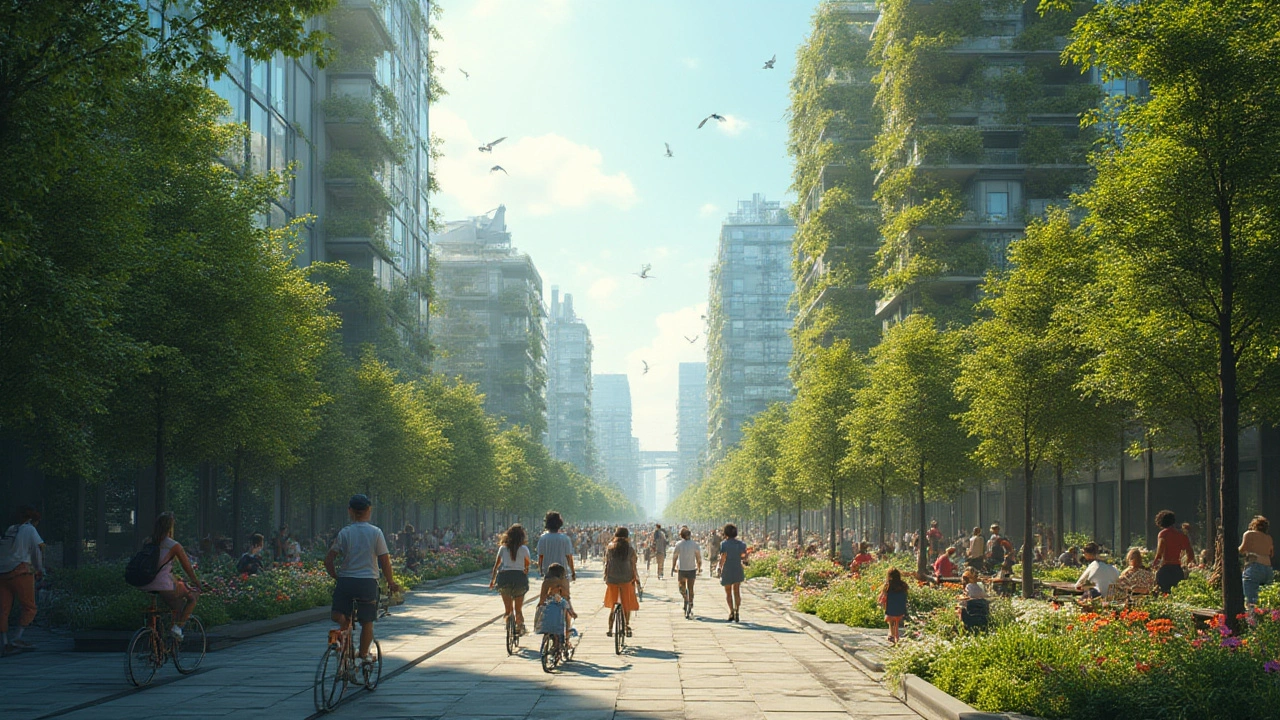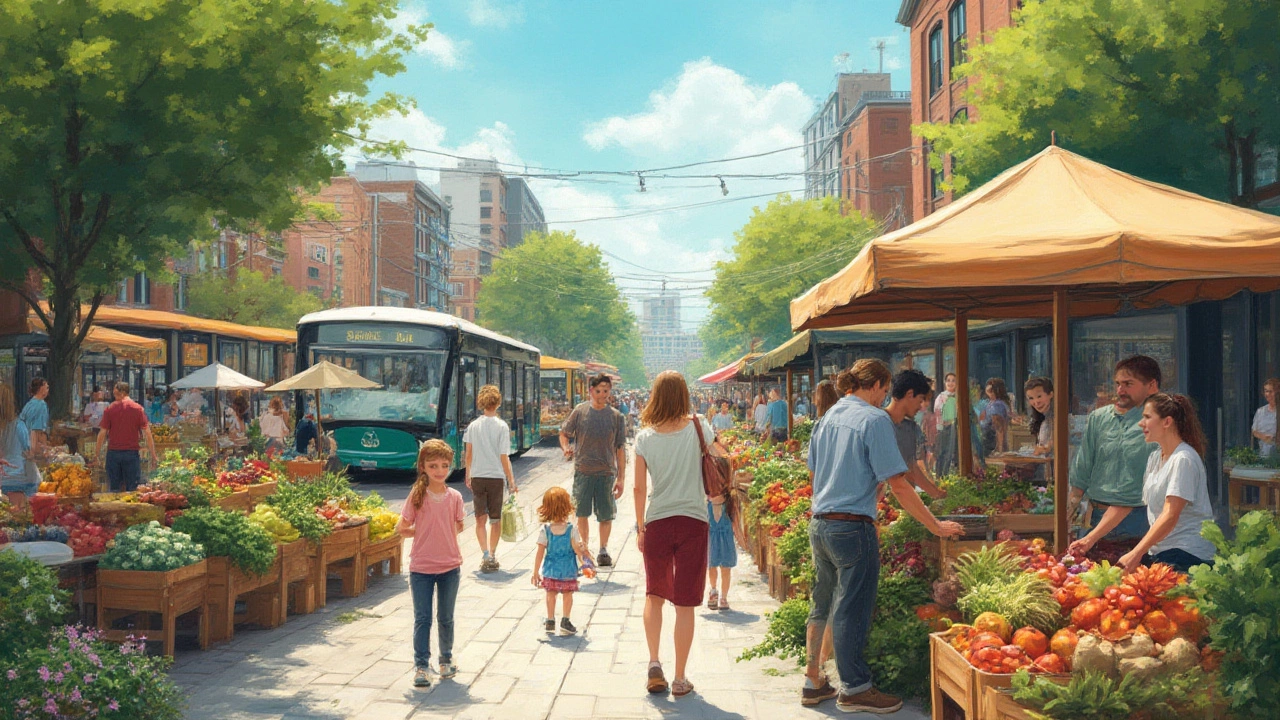Eco-Friendly Cities in America: The Greenest Urban Leaders Revealed

If you’ve ever stared blankly at recycling bins and wondered if it really makes a difference, picture an entire city pushing harder for change. Now imagine that city isn’t San Francisco or Seattle, but Portland. The Rose City doesn’t just talk a good green game—it sweats it, breathes it in, and bikes it to work. Portland claims the crown as America’s most eco-friendly city, and yeah, that’s not just another Pacific Northwest stereotype. Want to know how one place makes such a dramatic shift, and what you can borrow for your own life? Here’s what happens when a whole community gets serious about sustainability—and it’s a lot less crunchy than you might think.
Why Portland Leads America’s Green Charge
People love to joke about how everyone in Portland owns several flannel shirts and at least one fixie bike, but there’s a lot more going on beneath those recycled wool hats. Portland has become famous for integrating eco-minded choices into its everyday culture—not just in coffee shops but in city council meetings, businesses, and on family dinner tables. For starters, the city set out to shrink its carbon footprint with relentless energy. Back in 1993, Portland was the first U.S. city to create a comprehensive plan to cut greenhouse gas emissions. By 2019, the city reported a 19% decrease in emissions from 1990 levels, even as its population grew by more than a third.
Getting around in Portland feels different. Over 7% of people commute by bike—more than any other big American city. That’s not a fluke. The city’s invested in more than 385 miles of bikeways, with whole bridges (like the Tilikum Crossing) dedicated solely to public transit, bikes, and pedestrians—no cars allowed. If you’d rather stick to public transport, Portland’s MAX light rail and streetcars are electric-powered, making for a cleaner ride. Even the city buses are pushing toward renewable fuels.
The city doesn’t stop at moving people around. Portland’s energy grid is 100% coal-free and aims to be fully reliant on renewable energy by 2030. Over half of its electricity already comes from wind, solar, and hydropower sources. They cracked down on single-use plastics years before most of the country. By city law, every home and business must compost food scraps—and you’ll find neighborhood compost drop-offs right along with recycling bins. Urban farming isn’t just for hipsters. In fact, more than 200 community gardens help feed entire neighborhoods. Even the Portland Timbers soccer stadium runs almost entirely on wind power!
It’s the little details, too. You’ll see eco-roofs blanketing office buildings, green walls filtering city air, and solar panels gleaming from hospital roofs. Local restaurants source produce from within 100 miles, so your salad’s lettuce probably grew right outside the city. Grocery stores like New Seasons and Whole Foods host educational tours about food waste, and city incentives make backyard chicken coops and beehives a normal sight. No wonder locals joke: if you can’t find an eco-hack in Portland, you’re just not trying.
Innovative Green Policies: Citywide Commitments That Work
While experts like to pick apart the numbers, you can’t argue with how Portland’s policies actually change how thousands of people live every single day. Take the city’s commitment to building standards—Portland was one of the first to require all new city-owned buildings to meet LEED certification (that’s basically the gold standard for green construction). Private development has followed suit. By 2024, more than 5 million square feet of Portland buildings are LEED certified. The city even grants tax boosts to homes outfitted with solar panels or rainwater catchment.
Check out the city’s ban of expanded polystyrene takeout containers back in 1990—a move that made a real dent in landfill waste long before Instagram made tidy compost bins trendy. Portland has strict tree protection laws, too. Homeowners can’t simply chop down decades-old oaks or maples unless they plant new ones in their place. Want to see if your favorite Portland coffee shop runs on green juice? The city publishes regular sustainability scorecards for local businesses, ranking their water, waste, and energy efficiency. It gives residents real choices with actionable info.
Waste reduction isn’t just a city-wide initiative; it lives in every kitchen. Portland’s curbside composting system lets you throw all food scraps, pizza boxes, coffee grounds, and even used napkins right in with your yard waste. In 2023, Portland diverted an estimated 55,000 tons of food scraps from the landfill, transforming it into rich compost for city parks and gardens. It pays off—in 2024, Portland’s waste diversion rate hit a record 69%. It’s not just numbers, though. Residents really are more conscious of their footprint, and the city keeps making it easier with new support for refill shops, tool libraries, and repair cafes all over town.
Council-driven climate policies push businesses, too. In 2022, the city required large buildings to publicly report their energy usage, so owners race to outdo each other for sustainability bragging rights. Portland also hosts one of the largest green building expos each spring, drawing eco-architects and designers from across the country to show off the latest ways to save energy and water.
| Category | Portland | U.S. National Average |
|---|---|---|
| Bike Commuter % | 7.2% | 0.6% |
| Carbon Reduction (since 1990) | -19% | -1.3% |
| Waste Diversion % | 69% | 34% |
| Renewable Energy (City Level) | 54% | 16% |
If you ever drive into Portland, you can literally see the difference. Lush strips of native planters break up city arterials, cool down roads, and soak up stormwater runoff. It isn’t just about pretty flowers; these “green streets” prevent pollutants from ending up in the Willamette River. And thanks to big efforts in natural habitat restoration, you’ll spot salmon returning to city creeks and beavers getting comfy right downtown.

People Power: How Residents Are Making a Difference
The city’s policies may open the door, but it’s everyday Portlanders who kick things into high gear. Think about it: the average Portland resident recycles or composts 450 pounds of waste per year. Parents get kids excited about “eco-lunches” with thrifted containers and homemade snacks. A handful of local nonprofits, like Friends of Trees, recruit thousands of volunteers annually to plant, water, and even hug new saplings.
If you drop by a Portland farmer’s market, it isn’t just trendy—it’s a lifeline for supporting local growers and diversifying diets. With more than 35 weekly farmers markets in the metro area, there’s always a way to skip the middleman and buy straight from the plot. Most farmers accept compostable food packaging, reusable totes, and even hold clothing repair pop-ups at the stalls. Talk about low-waste living in action.
This culture of activism weaves through every neighborhood. School kids learn about recycling by sorting classroom waste. Local businesses push plastic-free pledges—bakeries hand out bread in reusable bags, and retail shops offer repair services as the norm, not the exception. Then there’s the community gardens: they’re not hidden behind fancy gates, but smack dab in the middle of public parks and vacant lots, often run collaboratively by neighbors and promoted by city grants.
On local social media, you’ll find groups trading tips about everything from making beeswax wraps to mapping the cleanest walking trails. In some districts, the city organizes block-by-block sustainability challenges with real rewards—think discounts at zero-waste shops or free passes to eco-museums for the greenest households. It’s not just bragging rights but a genuine sense of “we’re in this together.”
Businesses get in on the action, too. Housing developers in Portland are famous for building tiny home communities and co-housing spaces, keeping heating and water needs much lower than your standard suburbs. Breweries offer tours on how they reclaim wastewater or compost spent grain into fertilizers for local farms. Even independent fashion boutiques highlight products upcycled from old bike inner tubes or sourced from sustainable cotton cooperatives.
- If you move to Portland, don’t be surprised when your neighbor hands you a list of favorite green grocers—or invites you to the next clothing swap.
- Want tips for living greener like a Portlander? Try biking instead of driving at least once a week, visit a farmers market for plastic-free shopping, or join a local park cleanup.
- If you’re a renter, see if your property participates in the city’s Green Building Registry and ask for reusable moving boxes from the local library.
You might even find yourself swept up by the annual Pedalpalooza festival. It’s a summer citywide celebration of bikes, complete with hundreds of themed rides and creative costumes—one summer, locals organized a “Bikes and Blooms” ride, stopping at pollinator-friendly gardens across the city.
Green Takeaways: What Can You Learn From Portland?
So if you’re eyeing up Portland for a future visit, move, or just looking to swipe some eco-insight, what can you actually “take home”? The most surprising lesson is how normal this all feels for those who live here. Nobody’s perfect (not even Portlanders), but embracing sustainable routines can be a lot easier—and much less pretentious—than the stereotypes suggest. Here are a few ideas any city or hometown could adapt.
- Redesign commuting: Advocate for protected bike lanes and expanded public transit. Even small increases in non-car trips can slash community carbon footprints.
- Get serious about food waste: Push for curbside compost pickup, host food-share fridges, and educate about ugly produce. A national study in 2023 linked cities with composting programs to a 25% drop in landfill use.
- Go local, not just with food, but with materials, services, and energy—neighborhood solar collectives or co-ops can cut costs and emissions without waiting for distant providers.
- Reward transparency: Celebrate businesses and buildings that publish their environmental footprints. It not only makes shopping easier but nudges others to join in the green game.
- Put nature first, especially in restoring waterways and planting native trees. Healthier cities mean better mental health, cleaner air, and (bonus) higher property values.
Maybe the biggest shocker: you don’t need a huge budget to go greener. Most of Portland’s shining examples start at street level—volunteer groups, schools, and small ventures daring to try something new. The city just gives a nudge with policy, support, and a collective attitude that “green” isn’t a hippie thing, but the neighborly thing.
If cities across the U.S. followed even half of Portland’s lead, our communities could start flipping the stats in favor of the planet—without losing what makes city life fun, vibrant, and downright delicious. Sure, Portland’s not perfect. But if you want a sneak peek at what America’s greenest future could look like, this is the city study worth copying, one bike ride or backyard garden at a time.